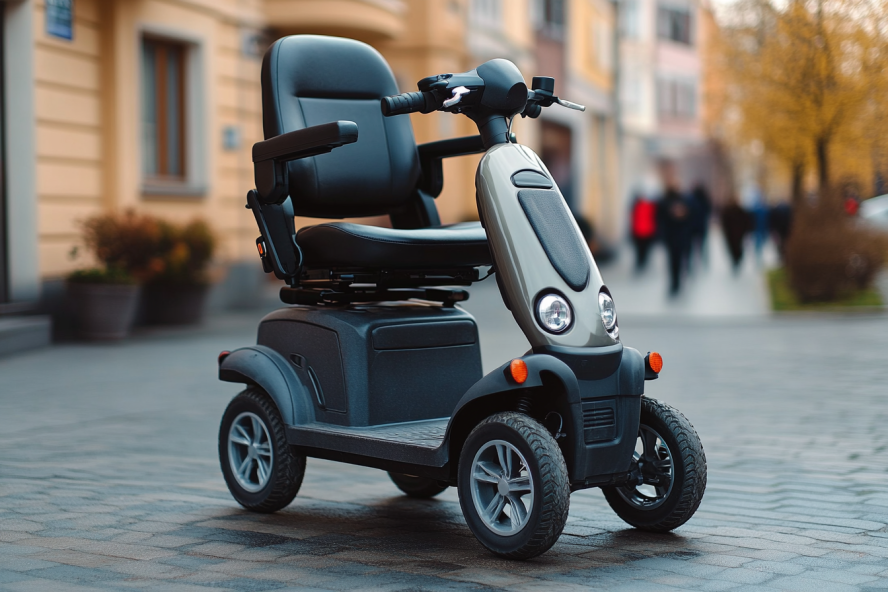Mobility Scooters: Complete Guide to Features and Ownership
Mobility scooters provide independence and freedom for individuals with limited mobility, enabling them to navigate daily activities with confidence. These battery-powered vehicles offer a practical solution for those who struggle with walking longer distances but don't require a full wheelchair. Understanding the different types, features, and considerations can help you make an informed decision about whether a mobility scooter meets your needs.

What Are the Different Types of Mobility Scooters and Their Key Features?
Mobility scooters come in several distinct categories, each designed for specific environments and user needs. Three-wheel scooters offer superior maneuverability in tight spaces, making them ideal for indoor use and shopping centers. Their compact turning radius allows navigation through narrow aisles and doorways, though they provide less stability on uneven surfaces.
Four-wheel scooters deliver enhanced stability and are better suited for outdoor use and longer distances. These models typically feature larger wheels, more robust suspension systems, and higher weight capacities. Heavy-duty scooters represent the most powerful option, accommodating users up to 500 pounds and handling challenging terrain with ease.
Travel scooters prioritize portability, featuring lightweight designs that can be disassembled into manageable pieces. Boot scooters, a subset of travel models, are specifically designed to fit in car trunks, making them perfect for users who want mobility assistance while traveling.
How Long Do Mobility Scooter Batteries Last and What Are the Charging Requirements?
Battery performance varies significantly based on scooter type, usage patterns, and environmental conditions. Most mobility scooters use sealed lead-acid or lithium-ion batteries, with the latter offering longer lifespan and reduced weight. Standard scooters typically provide 8-15 miles of range per charge, while heavy-duty models may achieve 20-35 miles.
Charging times generally range from 6-8 hours for a complete cycle, though some fast-charging systems can reduce this to 3-4 hours. Battery life expectancy spans 12-18 months with regular use, depending on charging habits and maintenance. Proper charging practices include avoiding complete discharge, charging after each use, and storing batteries in temperature-controlled environments.
Environmental factors significantly impact battery performance. Cold weather can reduce range by up to 20%, while frequent hill climbing or carrying heavy loads accelerates battery drain. Users should consider their daily distance requirements and plan charging schedules accordingly.
What Maintenance Practices Ensure Long-Term Scooter Performance?
Regular maintenance extends scooter lifespan and ensures reliable operation. Weekly inspections should include checking tire pressure, testing brakes, and examining electrical connections. Proper tire maintenance prevents premature wear and maintains optimal traction, particularly important for outdoor models.
Battery care represents the most critical maintenance aspect. Clean battery terminals monthly to prevent corrosion, and ensure proper ventilation during charging. Store scooters in dry locations and avoid exposure to extreme temperatures, which can damage electrical components and reduce battery efficiency.
Professional servicing every 6-12 months addresses complex mechanical issues and ensures safety systems function properly. This includes brake adjustments, motor inspections, and electrical system testing. Many manufacturers offer service plans that cover routine maintenance and provide peace of mind for users.
Cleaning should focus on removing debris from wheels and motors while avoiding water damage to electrical components. Use damp cloths for surfaces and compressed air for hard-to-reach areas, ensuring the scooter remains dry after cleaning.
What Should You Consider When Traveling or Transporting Mobility Scooters?
Air travel with mobility scooters requires advance planning and airline coordination. Most airlines accept scooters as assistive devices, but battery restrictions vary by carrier. Dry-cell batteries are generally permitted, while wet-cell batteries may require special handling or prohibition on certain flights.
Automobile transport options include vehicle lifts, ramps, or hitch-mounted carriers. Boot scooters offer the simplest solution, fitting directly into car trunks when disassembled. Larger scooters may require specialized vehicle modifications or trailer transport for longer journeys.
Public transportation policies vary by location, with many systems accommodating mobility scooters in designated areas. Research local regulations and size restrictions before relying on buses or trains for regular transportation needs.
Hotel and accommodation accessibility should be verified in advance, ensuring doorway widths, elevator access, and room layouts accommodate your specific scooter dimensions. Many establishments provide accessibility information online or through direct inquiry.
| Scooter Type | Typical Range | Price Range | Key Features |
|---|---|---|---|
| 3-Wheel Travel | 8-12 miles | $800-$2,500 | Lightweight, portable, indoor use |
| 4-Wheel Standard | 12-18 miles | $1,200-$3,500 | Stability, outdoor capable, moderate range |
| Heavy-Duty | 20-35 miles | $2,000-$6,000 | High capacity, long range, all-terrain |
| Boot Scooter | 6-10 miles | $600-$1,800 | Ultra-portable, car trunk compatible |
Prices, rates, or cost estimates mentioned in this article are based on the latest available information but may change over time. Independent research is advised before making financial decisions.
Mobility scooters offer valuable independence for individuals with mobility challenges, but selecting the right model requires careful consideration of personal needs, intended use, and budget constraints. Understanding battery requirements, maintenance needs, and transportation options ensures you can maximize the benefits while minimizing potential complications. Whether choosing a compact travel model or a robust heavy-duty scooter, proper research and planning will help you find a mobility solution that enhances your daily life and maintains your independence.
This article is for informational purposes only and should not be considered medical advice. Please consult a qualified healthcare professional for personalized guidance and treatment.




